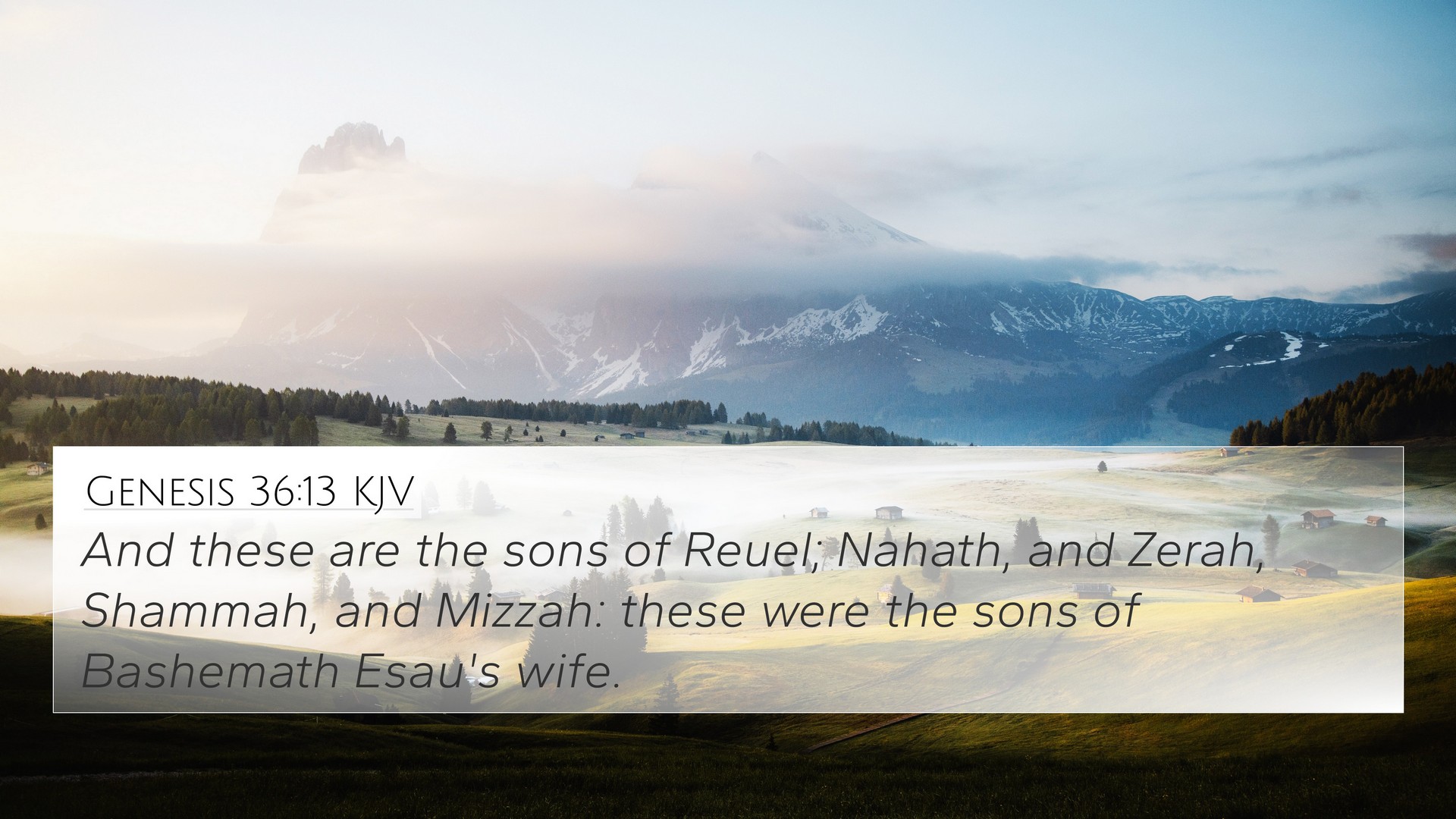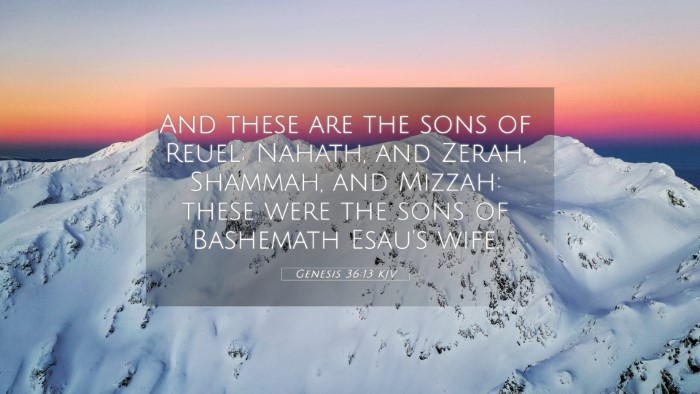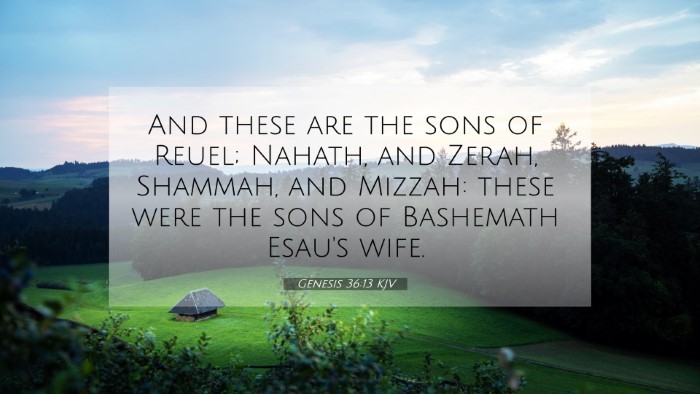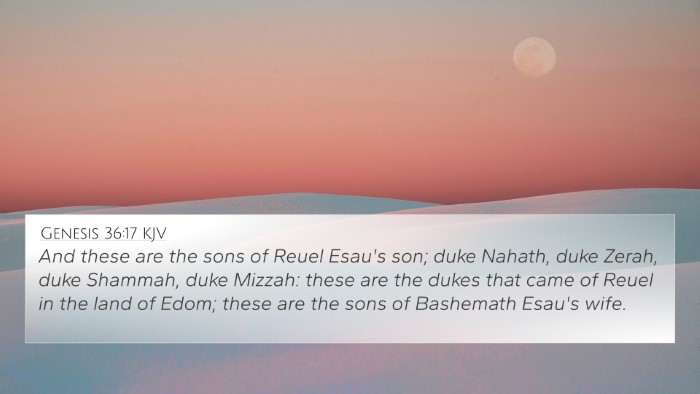Understanding Genesis 36:13
Genesis 36:13 lists the descendants of Esau, specifically noting the chiefs from his lineage. This verse reflects the broader biblical narrative surrounding Esau, Jacob, and the nations that derived from them.
Context and Significance
In the context of Genesis 36, the descendants of Esau are important as they demonstrate the fulfillment of God's promises to Abraham, Isaac, and Jacob. Esau, known as Edom, becomes the progenitor of the Edomite people. Understanding this lineage is crucial for comprehending the future relationship between Israel and Edom.
Commentary Insights
Matthew Henry's Commentary
Matthew Henry emphasizes the significance of genealogies in the Bible, particularly for understanding the historical and spiritual context. He notes that the mention of chiefs or leaders among the descendants of Esau highlights the growth and prominence of Edom as a nation.
Albert Barnes' Notes
Albert Barnes elaborates on the concept of 'chiefs' in this verse, explaining that it refers to tribal leaders. This shows the establishment of societal structures among the Edomites and indicates their development as a formidable group alongside Israel. Barnes indicates that these records serve as a testimony to God’s providence in establishing nations through specific lineages.
Adam Clarke's Commentary
Adam Clarke points out that the inclusion of Esau’s descendants, along with their titles, serves to validate the historical record and the importance of lineage in biblical history. He stresses that genealogies, while sometimes tedious, provide essential connections to scriptural themes and underscore God’s faithfulness to His promises through generations.
Bible Cross-References
This verse connects to several other scripture passages that enhance understanding through Bible verse cross-references:
- Genesis 25:23 - God reveals to Rebecca that two nations are in her womb: Esau and Jacob.
- Deuteronomy 2:4-5 - The Israelites are instructed to avoid conflict with the Edomites, as they are descendants of Esau.
- Obadiah 1:10 - Prophetic consequences are declared against Edom for their actions against Israel.
- Amos 1:11 - God’s judgment is pronounced on Edom for their violence against Israel.
- Romans 9:13 - Paul cites the divine preference for Jacob over Esau, establishing a theological discussion on election.
- Hebrews 12:16-17 - References Esau’s impulsive decisions and the consequences that followed.
- 1 Chronicles 1:35-37 - Another lineage record of Esau, confirming the ties between various biblical texts.
- Genesis 36:9 - This verse illustrates the genealogy of Esau, relating back to his historical significance.
- Genesis 32:4-6 - Describes Jacob’s encounter with Esau, highlighting the familial and national tensions.
- Malachi 1:2-3 - Further expounds on the love-hate relationship between Jacob and Esau, a theme prevalent throughout Scripture.
Thematic Connections
The theme of Bible verses that relate to each other is evident as one studies Genesis 36:13 in conjunction with these cross-references. The genealogical records serve to weave a rich tapestry that captures the unfolding narrative of God's plan and the complex relationships between the descendants of Abraham.
Conclusion
In summary, Genesis 36:13 is more than just a genealogical note; it encapsulates significant biblical themes of promise, providence, and the emergence of nations from pivotal figures. Through examining this verse alongside others, readers can appreciate the interconnectedness of scriptural texts and deepen their understanding through comparative Bible verse analysis.




